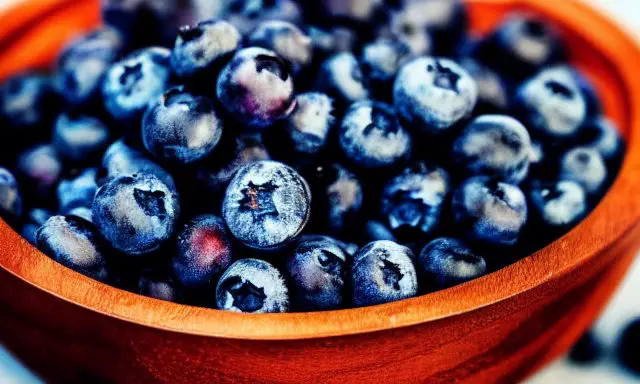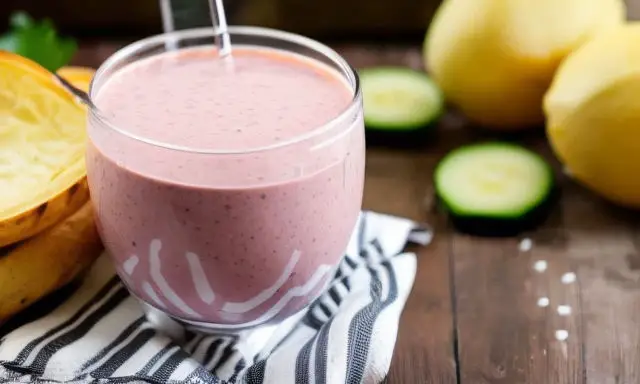Oats Nutritional Facts For Protein
If you’re looking for a good source of protein, look no further than oats. These nutritious grains have a high fiber content, energizing carbohydrates, and even antioxidants, which may help prevent free radical damage. Plus, they’re a good source of plant-based protein, providing up to 5 grams of protein per half-cup serving. In comparison, barley and quinoa contain less than 2 grams of protein per half-cup serving.
When you purchase through our links, we may earn a commission. As an Amazon Associate I earn from qualifying purchases.

Oats contain a good source of protein
Oats are an excellent source of protein and are considered a potential source of inexpensive protein. Oat protein is unique in its composition. It contains an average of 11 to 15 g of protein per 100 g. The oat protein differs from other cereal grains in its solubility. Barley and wheat proteins lack the characteristic protein matrix. Both contain a small amount of glutelins.
Oats are a great source of protein and contain a good amount of carbohydrates. A 40-gram serving of rolled oats has 4.8g of protein, which is about 10% of the daily requirement for most men and women. Aside from being high in protein, oats also contain many other nutrients, such as B vitamins and antioxidants. They also contain a small amount of sugar.
Oats are a great food for weight management. A half cup of rolled oats cooked with water has 165 calories. This same amount contains four grams of fiber and 6 grams of protein. The fiber and protein content help to keep you full longer. The protein content in oatmeal slows the release of glucose from your body, helping you to feel full longer. In addition, oats contain a good source of fiber, which helps your digestive system and curb your cravings.
Oats also contain high amounts of antioxidants. Beta-glucan found in oats has been shown to lower cholesterol and blood sugar levels. Beta-glucan also helps to increase your feeling of fullness. Studies have shown that oats are an excellent source of protein and are an excellent choice for vegetarians and vegans alike. There are many benefits of oats. They have all nine essential amino acids.
Oats also contain significant amounts of iron and zinc. Zinc is important for reproductive health and the immune system, while iron is a crucial component of red blood cells. It also helps in the synthesis of ATP, so a diet low in iron can lead to anemia. However, the non-heme iron in oats is not easily absorbed. A healthy amount of iron in the diet is essential for good health.
Oats are also a good source of fiber and have antioxidant effects. Studies have shown that oats can help prevent and treat gastrointestinal problems. Beta-glucan is a type of polyphenol found in oats. It is a type of antioxidant that provides powerful protection against free radicals. These compounds are responsible for the high antioxidant activity of oats. These benefits have led to the increased consumption of oats in various foods.
Oats contain soluble fiber. Beta-glucan helps regulate the absorption of nutrients in the digestive tract. Beta-glucan in oats has been shown to help control blood sugar levels and lower LDL cholesterol. Beta-glucan also helps protect the LDL (bad) cholesterol from oxidation. Oxidation causes damage to the tissues and raises the risk of heart attack. So, oats contain a good source of protein and can help lower your risk of heart disease. Oats also contain fiber and can help lower blood sugar levels and insulin resistance.
They are a source of dietary fibre
Oats are a plant in the family Avenaceae and are cultivated for their nutritional value and dietary fibre. Studies show that oats can help lower cholesterol levels, have anti-cancer properties, and are suitable for people with celiac disease. More people are using oats in their daily diets, and research is ongoing to see if oat-based foods can help fight disease.
Oats contain a variety of types of fibre. Oat bran is the outer layer of the oat groat and contains twelve to twenty percent of dietary fibre. This fibre is comprised of both soluble and insoluble b-glucans. Soluble oat bran contains b-glucan, while insoluble oat fibres are made of cellulose, lignin, and hemicelluloses. Insoluble oat fibres act as bulking agents, with a water-hydration capacity of four to twelve grams per 100 g.
Oats are rich in thiamin and folate, which are essential nutrients for the human body. These vitamins can help prevent heart disease, cancer, and age-related macular degeneration. They also contain high levels of zinc, which is necessary for the production of red blood cells and ATP. Insufficient intake of iron can lead to anemia, as non-heme forms are not readily absorbed by the body.
Oats are a good source of dietary fibre and protein. However, there is one problem with this type of protein. Gluten is a protein that is found in wheat and other cereals. When consumed in large quantities, this protein can cause damage to the small intestine. Gluten-free oats may be a better option. They contain lower levels of glutamic acid and prolamin.
Oat bran contains significant amounts of dietary fibre. Dietary fibre is a polysaccharide found in plants. This fibre is resistant to digestion and absorption in the small intestine and lowers the amount of cholesterol in the blood. Schneeman (2001) found that dietary fibre regulates nutrient absorption by acting as a substrate for the microflora in the gut. It also promotes laxation.
Oats can be steamed or toasted to increase their nutritional value. By steaming, oats lose their hull and develop their characteristic oat flavour. This process increases the absorption of iron and zinc. Oat groats are also a good source of dietary fibre and protein. However, many commercially available oat products are not dephytinized.
In addition to being a great source of protein and dietary fibre, oats are an excellent source of antioxidants. They fight free radicals in the body and play a key role in the prevention of disease. Tocopherols, which are present in the germ, are present in the endosperm. Oats also contain a-tocotrienol. The content of these compounds varies from 19 to 30 mg per kilogram of the oat kernel.
They are a source of soluble fiber
Oats contain high levels of soluble fiber, or beta-glucan, which is important in lowering blood sugar. According to the American Heart Association, consuming a diet rich in soluble fiber can help lower cholesterol and control blood sugar levels. It can also help lower the risk of developing colon cancer and cardiovascular disease. People with type 2 diabetes should eat a diet rich in soluble fiber.
In addition to their high fiber content, oats contain both soluble and insoluble fiber. Soluble fibers are digested more slowly than insoluble fibers, so they are great for your digestion. Oats contain the highest percentage of soluble fiber, or beta-glucan, in comparison to other grains. This makes them the ideal snack for people with diabetes. Oats are also high in protein and complex carbohydrates.
Oats are an excellent source of soluble fiber and protein. However, their high level of prolamins has been linked to a higher risk of diabetes and obesity. Furthermore, oats may be high in fat, so consuming them sparingly could result in weight gain. Oats also contain high amounts of vitamin B, C, and magnesium. If you want to get more nutrients from oats, you should eat them every day.
The soluble fibre and protein content of oats has been shown to increase the risk of colon cancer. Oats also have anti-inflammatory and anticancerous properties, which make them ideal for celiac patients. In addition, oats are considered a safe food for celiacs, and research continues to support the benefits of oats in fighting various ailments.
Eating a variety of foods rich in soluble fiber is the best way to increase your dietary fiber intake. A bowl of cooked oat bran has about two grams of soluble fiber per serving. Meanwhile, one cup of oat flakes has about 1.5 grams of soluble fiber per serving. And if you want a delicious way to increase your fiber intake, try roasting Brussels sprouts for 30 to 45 minutes in a 400 degree oven. They’ll be more palatable to the skeptics. Flaxseeds are another good source of soluble fiber. These seeds can be sprinkled on hot cereal or regular cereals.
Oats are high in short-chain fatty acids that have potential anticancer activity. Butyrate, a short-chain fatty acid, is a key player in fighting colon cancer. It affects gene expression, apoptosis, and cell proliferation in colon cancer cells. Propionic acid and acetic acid are also involved in fighting colon cancer. These fatty acids can inhibit colon cancer cell growth and promote programmed cell death.
Oats are a good source of soluble fiber and protein. However, you should be careful about the type of oat you buy, as different processing methods may alter the nutritional value. For example, oats may contain traces of gluten, which is not good for people with celiac disease. In addition, oats may be contaminated with wheat or other glutenous grains. If you’re sensitive to the avenin molecule, it’s best to stay away from oats.













